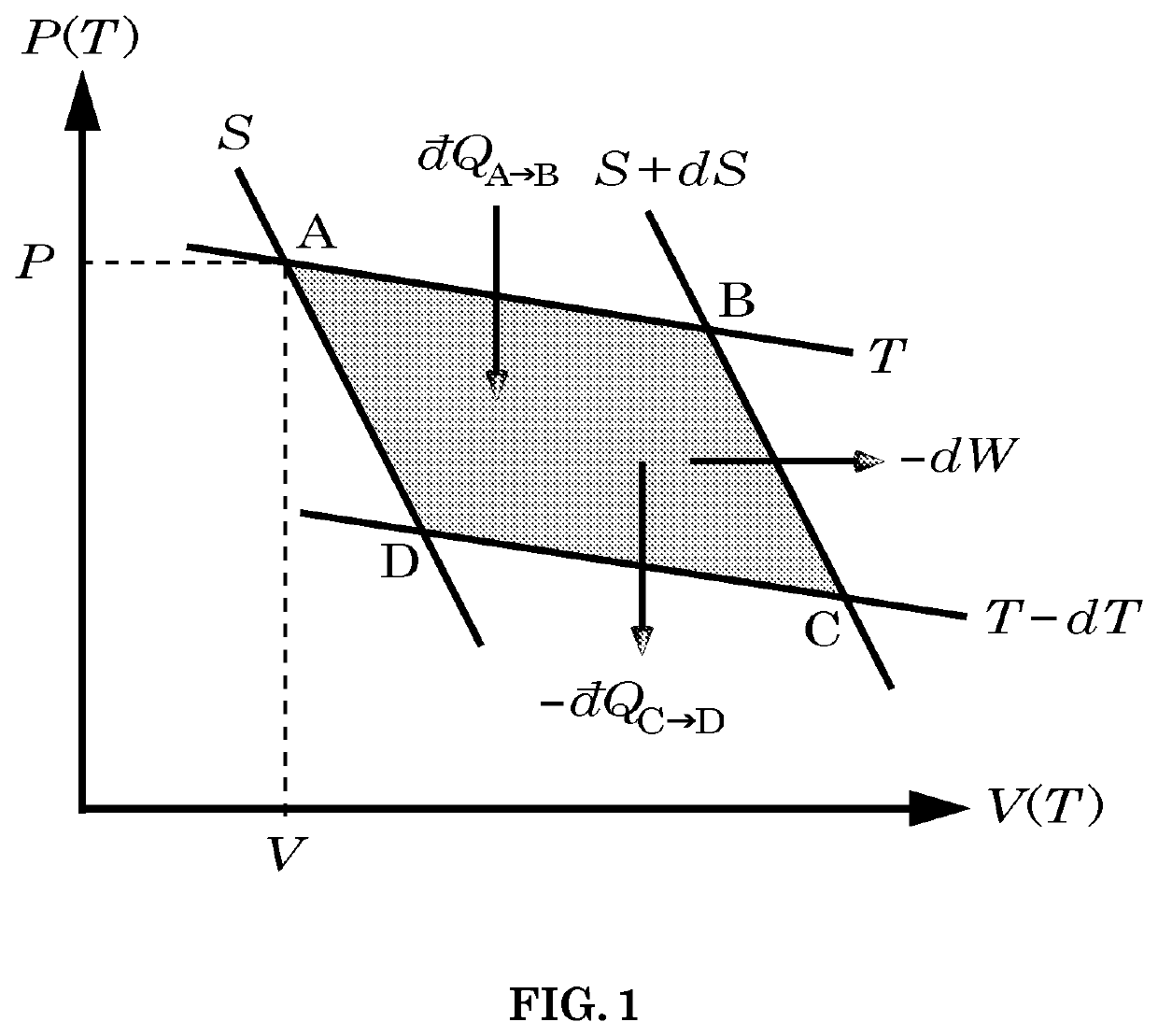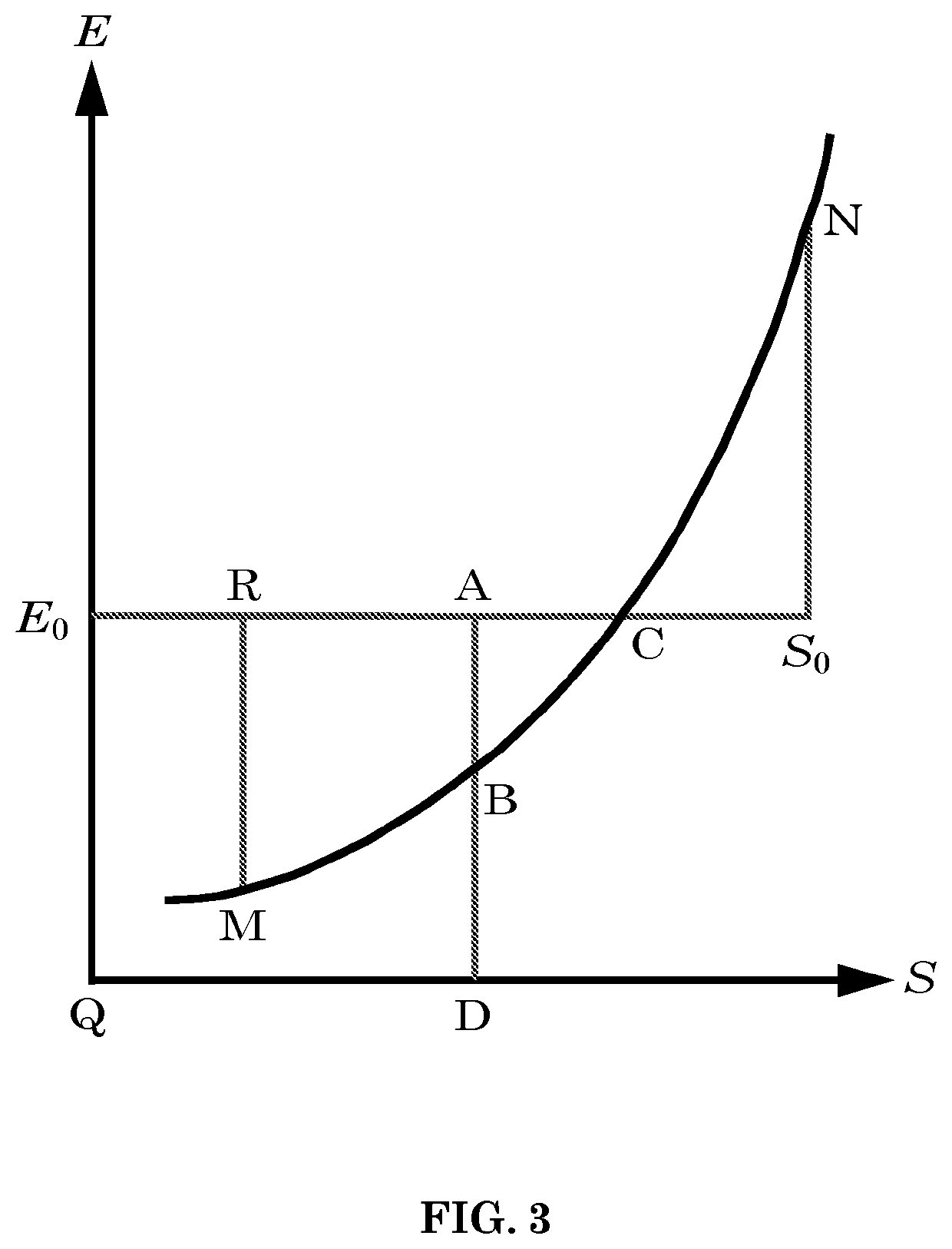Process and Manufacture of Low-Dimensional Materials Supporting Both Self-Thermalization and Self-Localization
a low-dimensional material and self-thermalization technology, applied in the direction of crystal growth process, non-metal conductor, polycrystalline material growth, etc., can solve the problem that the experimentation involving blackbody cavity radiation cannot provide any physical insight into the constitution of a planckian resonator, cannot increase and cannot achieve the above-entropy equilibration. , to achieve the effect of reducing the volume of the body
- Summary
- Abstract
- Description
- Claims
- Application Information
AI Technical Summary
Benefits of technology
Problems solved by technology
Method used
Image
Examples
example 1
[0312]Phosphorous was diffused into the 100 mm diameter monocrystalline (001) p-type silicon substrate 504 with a resistivity of 15 Ω-cm so as to result in an 8.7 ohm per square resistance, as measured by a four-point probe. The oxide was removed from the sample wafer by a hydrofluoric acid deglaze. The sample was inserted into a rapid thermal chemical vapor deposition (RTCVD) chamber of the type described by Gyurcsik et al. in “A Model for Rapid Thermal Processing,”IEEE Transactions on Semiconductor Manufacturing, Vol. 4, No. 1, 1991, p. 9. After loading the sample wafer upon a quartz ring, the RTCVD chamber was then closed and mechanically pumped down to a pressure of 10 mtorr. A 3% mixture, by volume, of diborane in hydrogen B2H6(3%) / H2(97%) at a flow rate of 364 sccm and a 7% mixture, by volume, of monosilane in hydrogen SiH4(7%) / H2(93%) at a flow rate of 390 sccm were introduced into the evacuated RTCVD deposition chamber.
[0313]The reactant gas flow rate stabilized at a pressur...
example 2
[0316]The procedure described above in Example 1 was carried out with the two exceptions that undiluted nitrous oxide N2O was introduced at a flow rate of 704 sccm and the flow rates of the two hydride gases were doubled. A 3% mixture by volume of diborane in hydrogen B2H6(3%) / H2(97%) at a flow rate of 728 sccm, a 7% mixture by volume of monosilane in hydrogen SiH4(7%) / H2(93%) at a flow rate of 780 sccm, and undiluted nitrous oxide N2O at a flow rate of 704 sccm were introduced. The vapor flow rate was stabilized at 9.54 torr, whereupon the tungsten-halogen lamps were turned on for 30 seconds, and regulated, in order to maintain the sample substrate 504 at 605° C. As shown in FIG. 44, an oxysilaborane solid 507 was deposited upon the donor-doped region 505. The composition of the thin oxysilaborane solid 507 was evaluated by x-ray diffraction spectroscopy.
[0317]A conventional ω-2θ XRD scan of the thin oxysilaborane solid 507 is shown in FIG. 45. The smeared diffraction peaks near 2θ...
example 3
[0319]The pyrolysis of boron and silicon hydrides was carried out by a low-pressure chemical vapor deposition (LPCVD) within a horizontal resistively-heated reactor comprising a five inch diameter quartz deposition tube, which was fixed on a table. The resistive heating element was mounted upon a motorized track, such that 75 mm silicon substrates could be loaded onto a quartz holder in the front of the tube at room temperature. Water vapor adsorbed onto the quartz walls during the sample loading provided a source of water vapor for the subsequent chemical reaction. A 75 mm diameter monocrystalline (001) n-type silicon substrate 508 of a resistivity of 20 Ω-cm was loaded onto a quartz holder in the quartz tube, which was sealed and mechanically pumped down to a base pressure of 30 mtorr.
[0320]As shown in FIG. 47, a boron-rich film 509 was deposited on the (001) n-type silicon substrate 508 by introducing a 3% mixture, by volume, of diborane in hydrogen B2H6(3%) / H2(97%) at the flow r...
PUM
| Property | Measurement | Unit |
|---|---|---|
| thickness | aaaaa | aaaaa |
| concentration | aaaaa | aaaaa |
| electrical potential | aaaaa | aaaaa |
Abstract
Description
Claims
Application Information
 Login to View More
Login to View More - R&D
- Intellectual Property
- Life Sciences
- Materials
- Tech Scout
- Unparalleled Data Quality
- Higher Quality Content
- 60% Fewer Hallucinations
Browse by: Latest US Patents, China's latest patents, Technical Efficacy Thesaurus, Application Domain, Technology Topic, Popular Technical Reports.
© 2025 PatSnap. All rights reserved.Legal|Privacy policy|Modern Slavery Act Transparency Statement|Sitemap|About US| Contact US: help@patsnap.com



